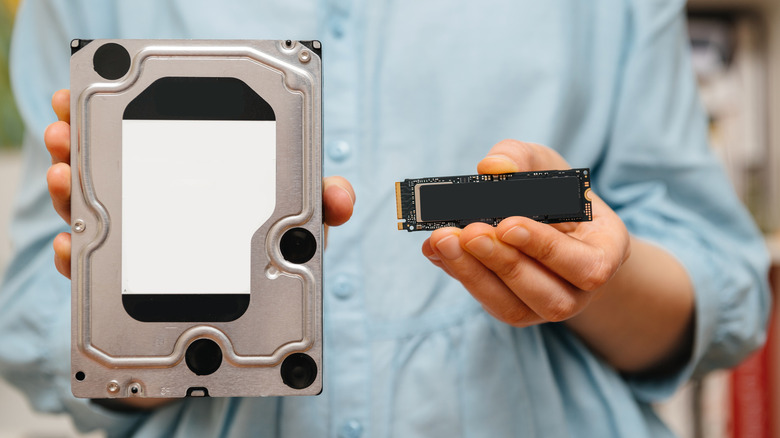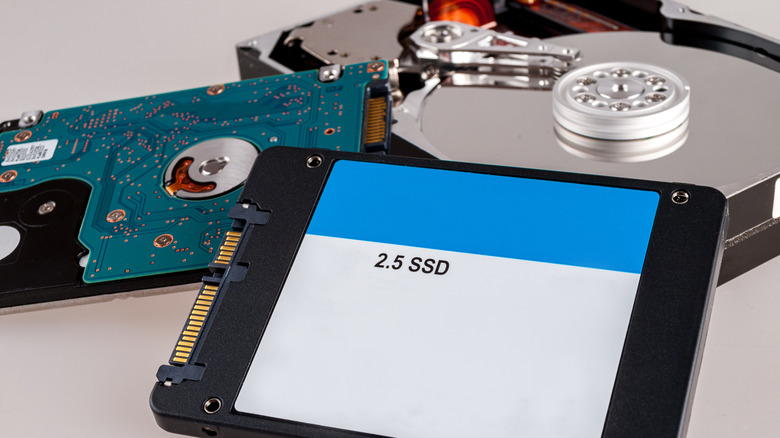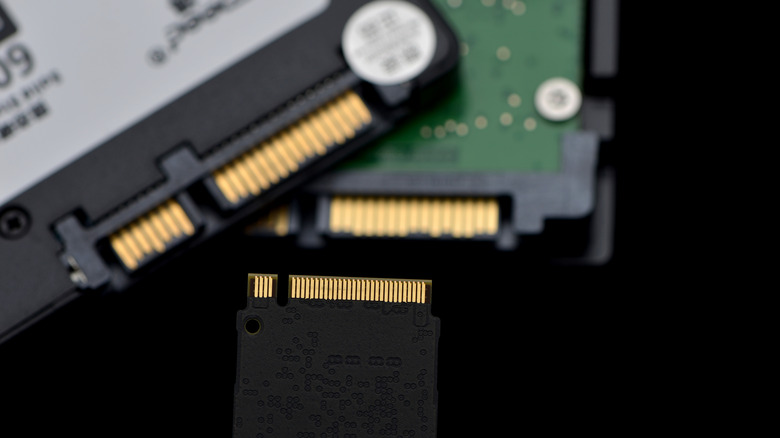How Is A SSD Different From A HDD? Here's What You Need To Know
When it comes to storing data on your PC, you essentially have two options: a traditional Hard Disk Drive (HDD) or a Solid State Drive (SSD). Both store your operating system, apps, games, and files, but the technology behind them is completely different, and choosing one over the other can have a big impact on your computer's performance, reliability, and even lifespan.
SSDs have quickly replaced hard drives as the go-to storage in most computers, and that's because SSDs have evolved far more than HDDs ever did. They're smaller, quieter, faster, cooler, more power-efficient, and better suited to the way modern PCs store and access data.
Even so, hard drives are still hanging on, especially in budget builds or when you need loads of storage for cheap. It's common practice to pair a smaller SSD for the operating system and everyday tasks with a larger HDD for files that don't require frequent access. That kind of split setup works well for many users because each drive leans into its own strengths. And if you're deciding between them — or planning to use both — it helps to understand exactly how they work and what each one is better at.
How each drive works
HDDs store data on a stack of spinning magnetic disks called platters. To access that data, a mechanical arm — like the ones in old record players — moves to the part of the platter where it is stored. The process is entirely physical, which adds delay each time the head needs to jump between different parts of the disk. Different HDDs may have different numbers of platters and heads to speed things up, but the access method is the same. Nearly all HDDs today still use the older SATA interface to connect to a PC.
Because everything inside an HDD moves, it's more vulnerable to wear and physical trauma. Every read and write involves physical movement, so frequent tasks — like downloads, edits, or system updates — and sharp impacts will cause an HDD to degrade faster over time. Solid State Drives, or SSDs, have no moving parts. Data lives in NAND flash memory cells and is accessed electronically, so there's no mechanical delay. That design also makes SSDs more resistant to physical damage through shock, vibrations, and general wear.
They do have a lifespan, though — usually rated in terabytes written (TBW), which measures how much data can be written before the drive's flash cells wear out. Different SSDs will have different TBW ratings, and while most users will never hit that limit, it is something to consider for heavy workloads like video production or large-scale backups, where data is constantly written, erased, and rewritten.
What makes SSDs faster
Another reason SSDs feel faster is the interface they use to move data. SSDs today fall into two camps. The first is a SATA SSD, which comes in a 2.5-inch form factor and connects to your motherboard with the same cables and ports as a SATA HDD. The second (and newer) is the M.2 SSD. It's relatively thinner, requires no cables, and installs directly on the motherboard or a PCIe card. M.2 SSDs support both SATA and NVMe modes. SATA SSDs use the same 6 Gbps interface as a hard drive, which means sequential read speed goes up to around 500-550 MB/s.
NVMe SSDs use PCIe lanes – and that's where the real speed difference kicks in. A newer PCIe Gen 4 SSD, such as Samsung's 980 Pro, pushes 7,000 MB/s. For context, a 7200-rpm SATA HDD like the Seagate Barracuda manages around 200 MB/s. Laptops sometimes use mSATA SSDs, which follow the SATA standard but come in a much smaller form factor. In modern desktops, though, the two dominant formats are SATA and PCIe. Older motherboards — like an Intel 8-series or AMD AM3, for example — may support only SATA, so you'll need to check compatibility before buying any NVMe solid-state drive.
And of course, those speed advantages come at a cost. The Gen 4 NVMe drive mentioned above is almost double the price of the SATA HDD for the same 2TB capacity — but for many, the performance gains are well worth it.


